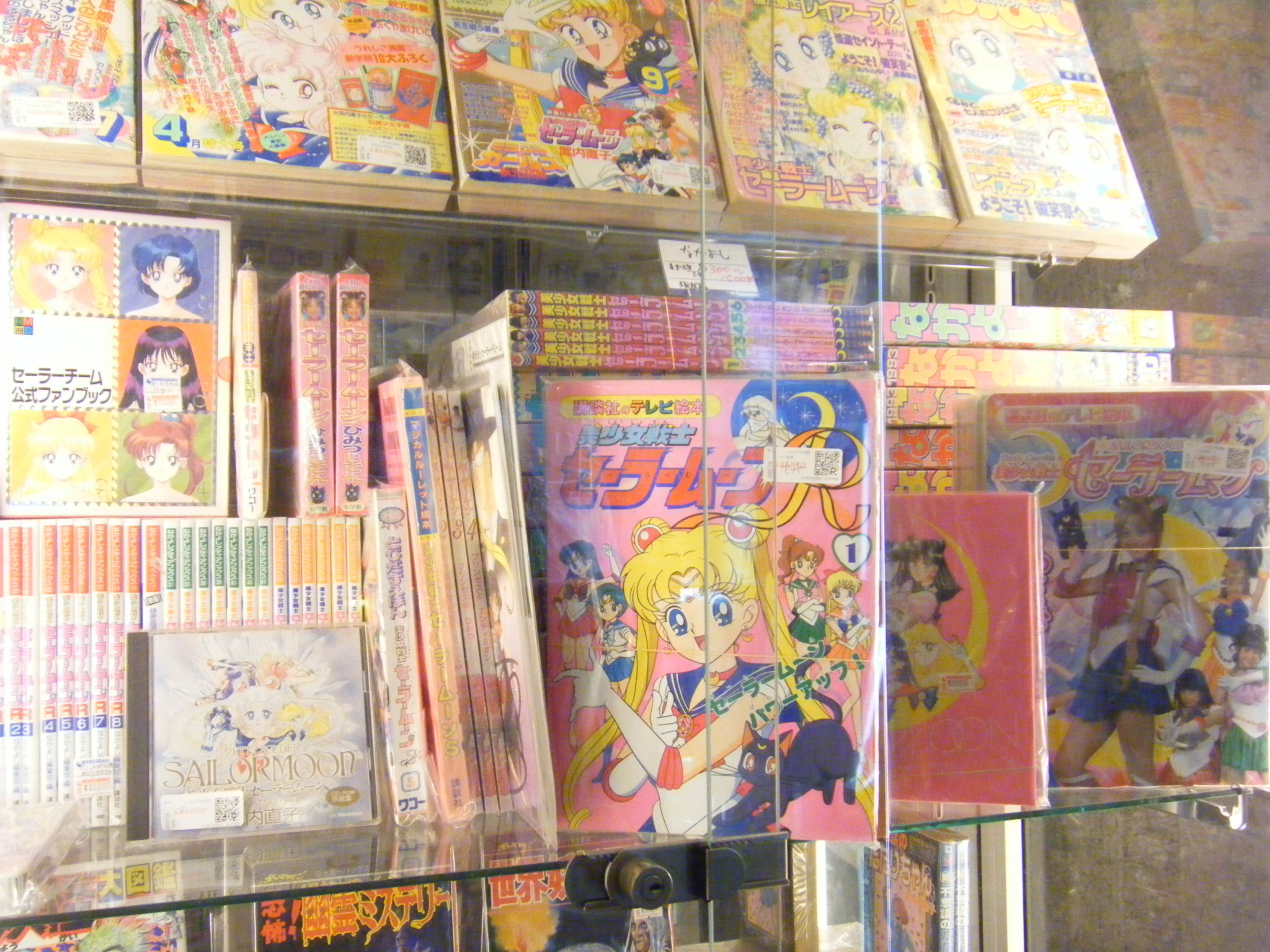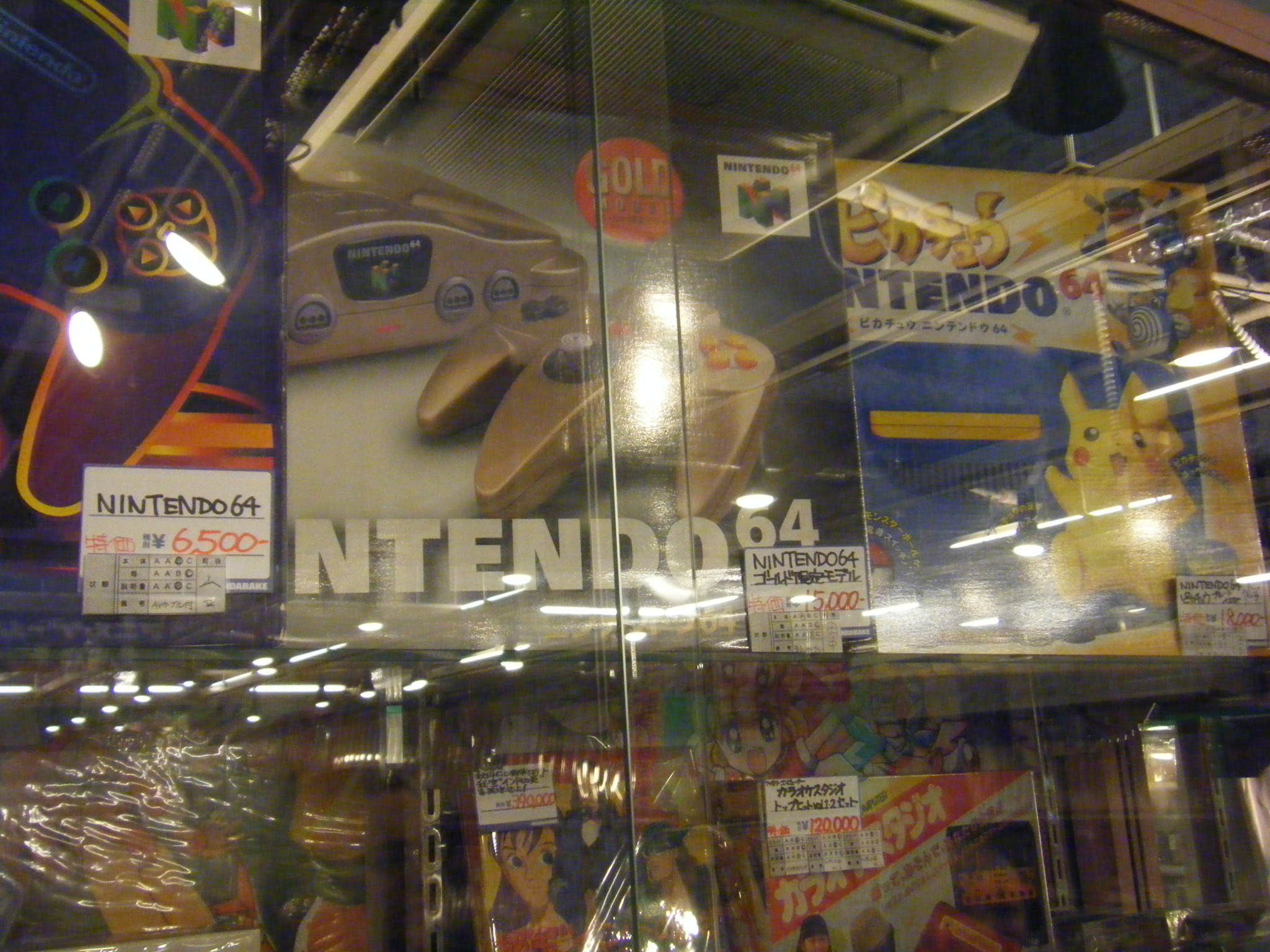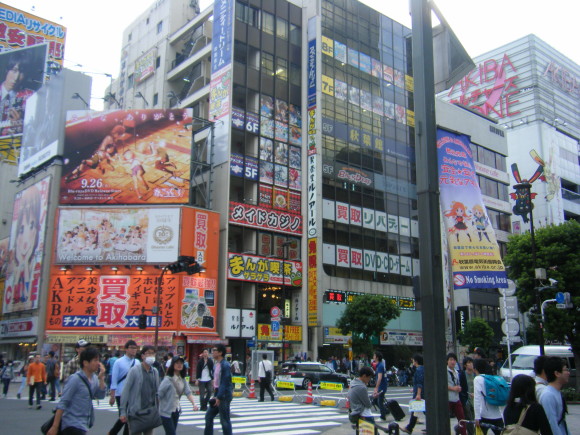“Oh my god, it’s 3,000 yen for one [insert Pokémon character name] card?”
That’s about $25, which is already steep, and the conversion is even less favorable for someone who is Australian, as is the friend who made this discovery. We’re in the Mandarake, a shop with eight floors of heaven for any Japanese manga/anime/games fanatic. This is typical for Akihabara, the section of Tokyo known as the center of electronics shopping and niche markets — like maid cafes, retro games, every anime — blown up to a scale that is almost shocking. Did I mention the seven-story sex shop?
Akihabara can be a bit disturbing if you think too much about it, but, for an afternoon sight-seeing trip, it’s pretty fun. I expect it’s even more exciting for someone who actually grew up with or is interested in what Akihabara offers. Unlike a lot of my peers, my interest in Japan didn’t emerge from early exposure to anime or manga. I’ve also never owned a Gameboy or any game console. I can recognize Pikachu and Sailor Moon, but I doubt I’ve ever seen a full episode of either of their shows. My family owns piano sheet music for the Mario theme song, but, as adorable as he is, I don’t have any real attachment to that little mustachioed plumber.


This isn’t to say that all the other international students came to Japan to get a better understanding of their favorite manga or to find a rare Nintendo game. But this is a perk for many of them, or even part of their identity, and occasionally I wish I shared the interest. I came to Japan because I love the culture — at least, the culture aside from what is on display in Akihabara. I love the food, the art, the rituals of daily life, the scarcity of dogmatic religions and the Studio Ghibli movies. I might only go to Akihabara once, but I’ll go to the temples in Asakusa again and again.
A friend wants me to dig deeper: But how did you become interested? Why do you love it?
Well, the art and architecture are beautiful, and the culture is paradoxical, and … I guess I’m following my parents’ footsteps. (My inner rebellious child rolls her eyes.) I guess I’m trying to unpack some other part of my identity.
My parents both studied abroad in Japan, met in Japan and had me in Japan. Because of this, in the beginning of elementary school, some classmates convinced me that I must be Japanese. It was easy to believe them — most of us had something in addition to “American” when we talked about our backgrounds. I knew some Japanese words, loved Hello Kitty and ate nori (seaweed). I felt more Japanese than Filipino, so, being technically half-Filipino, wouldn’t it make sense to also be partially Japanese? No, it was all in my little first-grader head. I forgive her; understanding your identity is quite a process.
In the U.S., if someone asks where I’m from, saying “I’m American” is not a satisfactory answer. In Japan, this works perfectly well. Among international students, my American accent makes it easy to guess my home country. Once someone learns I’m American, they want to know where I’ve lived in the US, not the ethnicity of my parents. I like this. They can learn that I’m technically half-Filipino later. They can learn that I’m not interested in anime later. It’s still fun to go to Akihabara together. Maybe it’s not the place to rediscover your identity or childhood or community or whatever, but that’s not the point. It’s fun and a little weird, and that’s a bonding experience.
Originally published at kyrabe.wordpress.com


[…] intended order of (everything, including) blog posts… I had to write for my school this week (link to last week’s post is here! and this week’s will be here!), so you’ll have to accept my apologies for neglecting […]